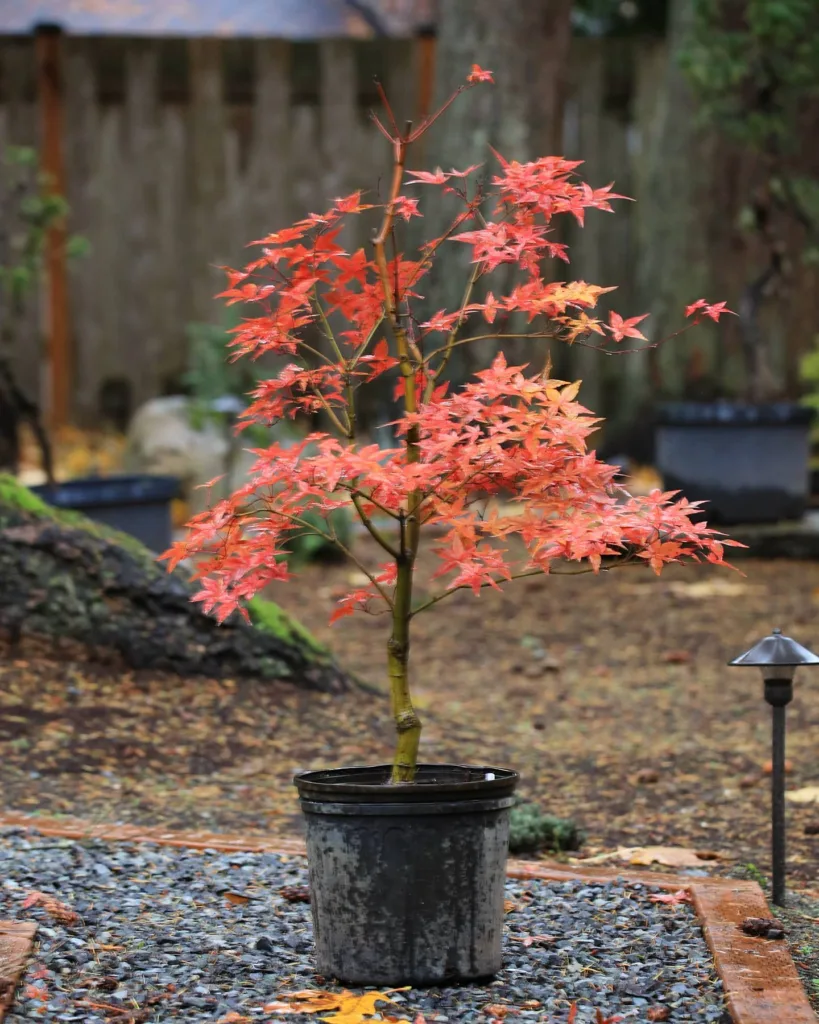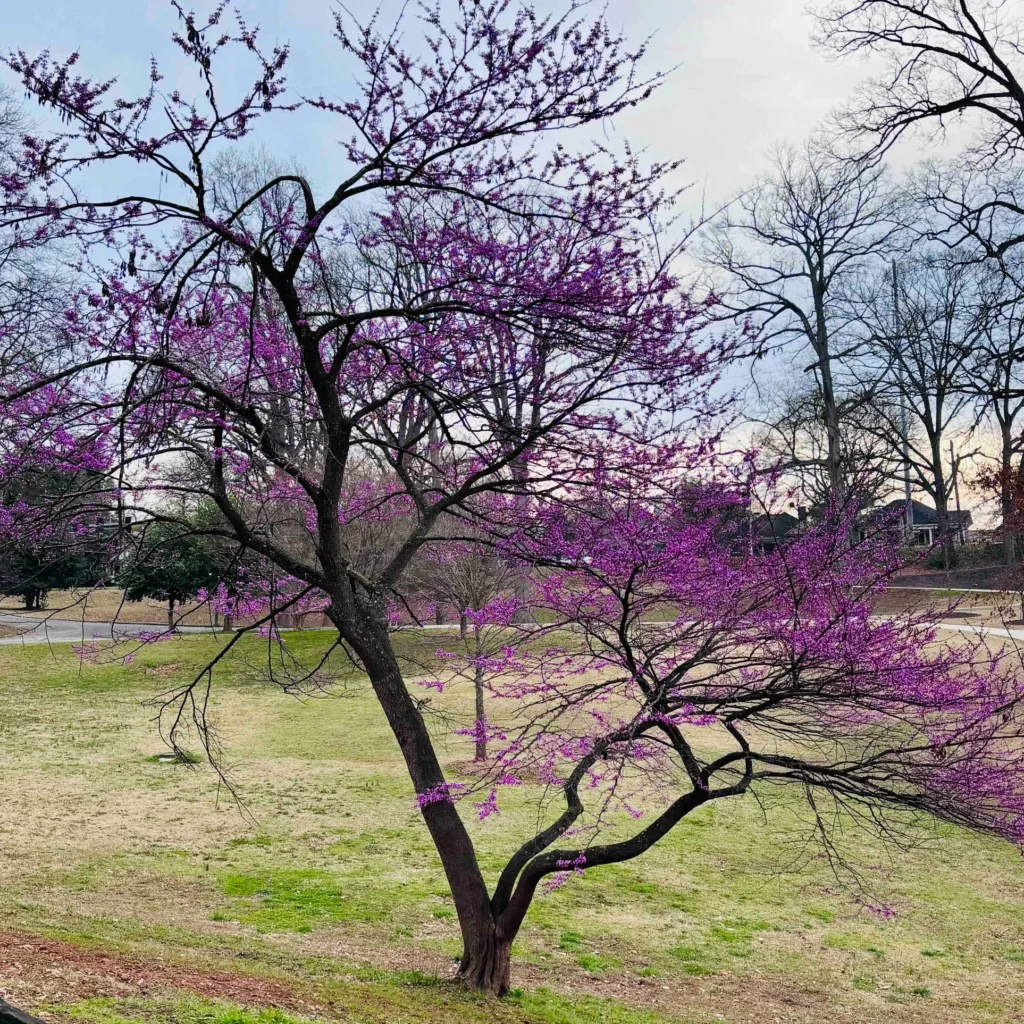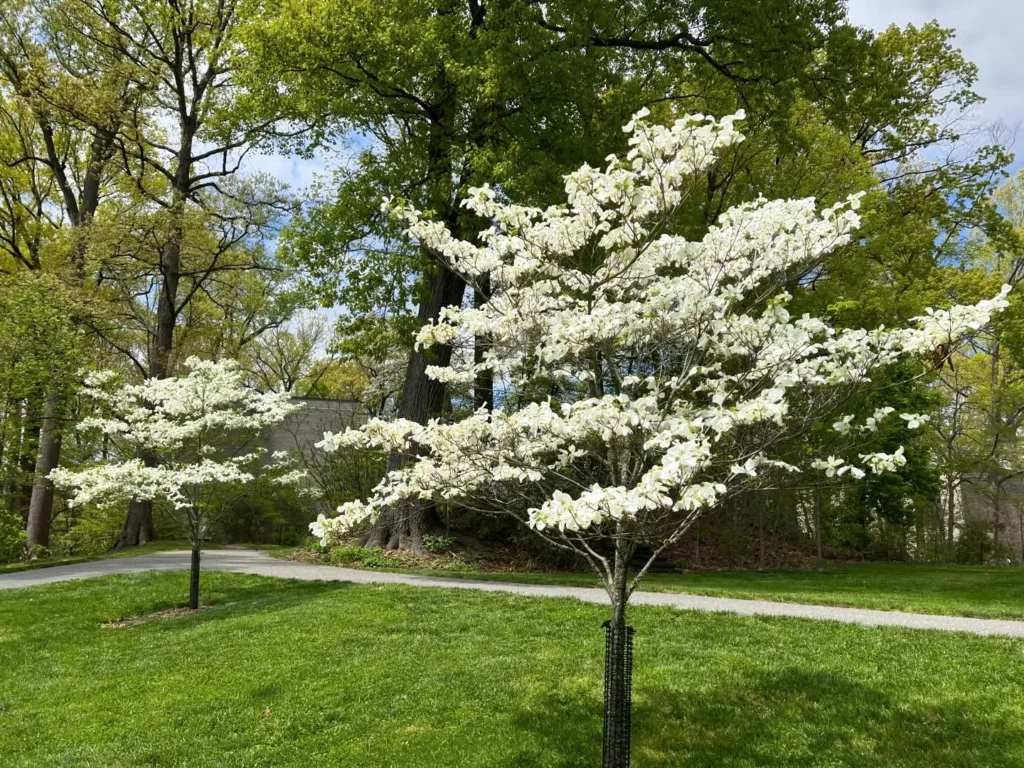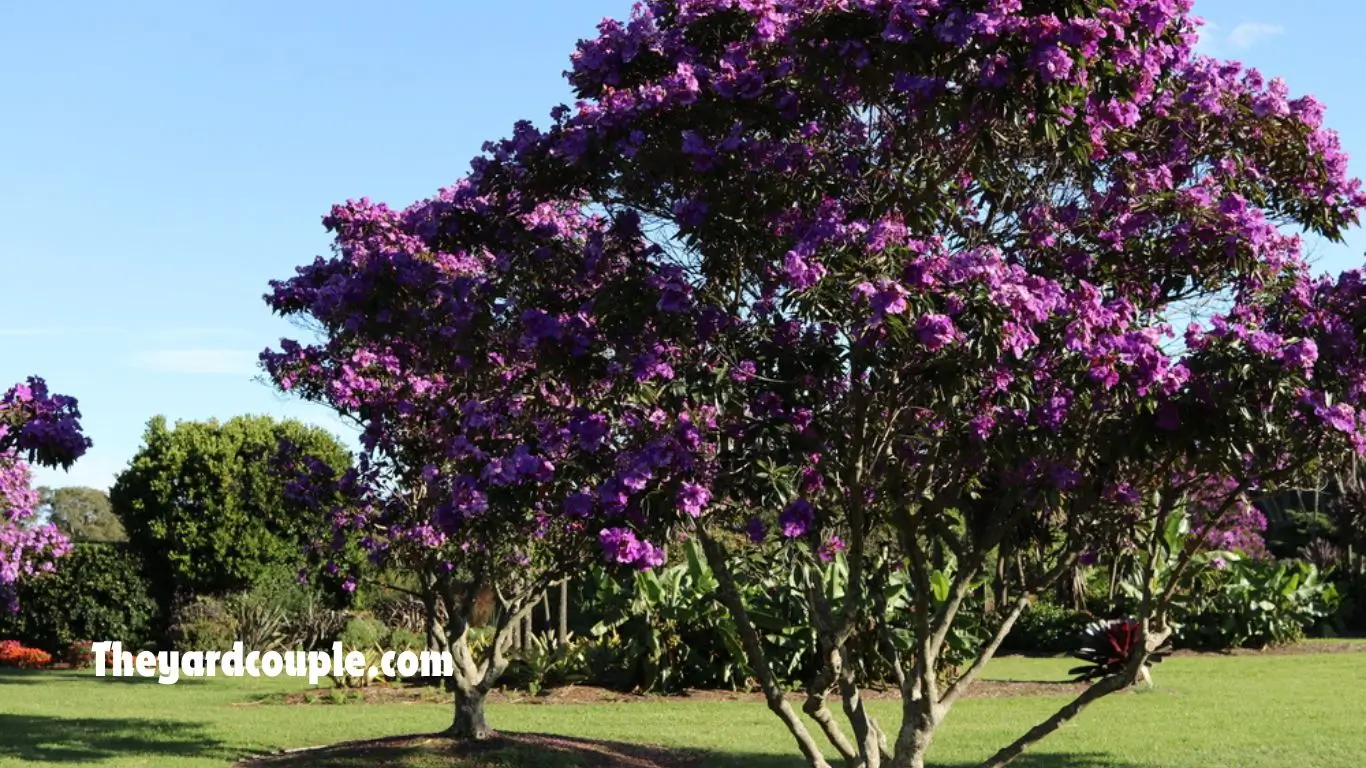If you’re looking for small trees with non invasive roots to plant in your yard, you’re making a wise decision!
These trees are perfect for small spaces and won’t cause damage to your foundation, driveway, or underground utilities.
In this guide, we’ll explore 15 excellent small trees with non-invasive root systems that bring beauty, shade, and habitat for wildlife without the risk of damaging your landscape infrastructure.
Why Plant Small Non Invasive Trees?

Choosing the best small trees with non-invasive roots is crucial for urban and suburban landscapes where space is limited.
Unlike large trees with aggressive root systems that can damage foundations, pipes, and pavement, these small non-invasive trees provide the benefits of shade, privacy, and aesthetic appeal without causing structural problems.
These trees are versatile and can be planted in various parts of your yard, such as near patios, along driveways, around pools, or in narrow side yards.
Additionally, many of them are low-maintenance, drought-tolerant, and suitable for different climates, making them an ideal choice for busy homeowners looking for a balance of beauty and practicality.
Compare:
- 12 Tall Thin Evergreen Trees for Landscaping
- 15 Best Shrubs for Front of House
- 20 Beautiful Hydrangea Landscaping Ideas
- 25 Plants for Around the Pool
The 15 Small Trees with Non Invasive Roots

When selecting trees for your landscape, especially in smaller or more developed areas, choosing those with non-invasive roots is crucial.
These trees provide all the benefits of greenery and shade without the risk of causing damage to your property’s infrastructure.
From vibrant flowering varieties to evergreen stalwarts, the following list features 15 best small trees with non-invasive roots that will enhance your yard’s beauty while ensuring safety and longevity for your landscaping investments.
1. Japanese Maple (Acer palmatum)

From time immemorial, the Japanese Maple is known as a small tree with non invasive roots. The tree’s stunning foliage changes color throughout the seasons.
Growing up to 15-25 feet tall, it thrives in USDA zones 5-8. Its shallow, non-invasive roots make it a perfect choice for small yards and patios, where it can add a burst of vibrant color.
This tree is great for planting near your home, in a front yard, or along walkways, where it can create a peaceful atmosphere without causing root-related damage.
Japanese Maples prefer partial shade and can be a striking focal point in your landscape.
2. Crape Myrtle (Lagerstroemia indica)
The Crape Myrtle is celebrated for its long-lasting blooms in shades of pink, white, purple, and red. Reaching a height of 15-25 feet, this tree thrives in USDA zones 7-9.
Its non-invasive roots make it ideal for planting near patios, along driveways, or around pools.
Crape Myrtles perform best in full sun and are a fantastic option for adding color and interest to your landscape while keeping your hardscaping intact.
This tree is also drought-tolerant, making it a low-maintenance choice for various garden settings.
3. Eastern Redbud (Cercis canadensis)

The Eastern Redbud produces heart-shaped leaves and vibrant pink-purple flowers in spring. It grows up to 20-30 feet tall and thrives in USDA zones 4-9.
Its shallow, non-invasive roots make it a safe option for planting near homes or along fences.
Eastern Redbuds are excellent for front yards, along walkways, or as a decorative tree in garden beds.
Their spring blossoms attract pollinators, adding to the overall biodiversity of your garden, while the roots remain non-invasive.
4. Flowering Dogwood (Cornus florida)

The Flowering Dogwood is known for its iconic spring blossoms and vibrant fall foliage. It reaches 15-25 feet in height and is suited for USDA zones 5-9.
With shallow, non-invasive roots, this tree can be safely planted near homes, driveways, and patios.
Flowering Dogwoods are ideal for front yards, where their seasonal interest can enhance curb appeal.
They can also be used as a focal point in backyard landscapes or along borders for year-round beauty.
5. Amur Maple (Acer ginnala)
The Amur Maple is a smaller tree with striking red foliage in the fall. It grows up to 20 feet tall and thrives in USDA zones 3-8.
Its non-invasive roots make it suitable for planting along fences, near patios, or in small yards.
Amur Maples are great for adding seasonal interest and can be planted in garden beds, near walkways, or as accent trees in the front yard.
Their ability to tolerate various soil conditions makes them a versatile choice for many landscapes.
6. Dwarf Alberta Spruce (Picea glauca ‘Conica’)
The Dwarf Alberta Spruce is a slow-growing evergreen that reaches 10-12 feet in height.
It is well-suited for USDA zones 2-6 and has non-invasive roots, making it a perfect choice for small spaces like side yards or near foundations.
This tree’s compact, dense form makes it ideal for planting in pots or near entryways.
ts year-round greenery provides visual interest without the need for extensive pruning or maintenance, and it can be safely planted near structures.
7. Little Gem Magnolia (Magnolia grandiflora ‘Little Gem’)
The Little Gem Magnolia is a compact version of the Southern Magnolia, growing up to 20 feet tall.
It thrives in USDA zones 7-9 and is known for its fragrant white flowers and evergreen leaves. Its non-invasive roots make it a safe choice for planting near pools, patios, or along driveways.
This tree provides year-round beauty and is perfect for front yards, pool areas, or as a privacy screen along fences.
The Little Gem Magnolia also works well in smaller gardens due to its manageable size and minimal root spread.
8. Japanese Holly (Ilex crenata)
The Japanese Holly is an evergreen shrub that can be pruned into a small tree, growing up to 10 feet tall.
It flourishes in USDA zones 5-8 and has a compact, non-invasive root system that makes it ideal for foundation plantings or as a hedge along fences.
This tree is perfect for side yards, patios, or as a decorative feature in front yards.
Its dense foliage provides privacy and structure without the risk of root damage to nearby structures.
9. Serviceberry (Amelanchier spp.)
The Serviceberry is a versatile tree that grows up to 20 feet tall and thrives in USDA zones 4-9. It offers four-season interest, with spring flowers, summer berries, and vibrant fall foliage.
Its shallow, non-invasive roots make it a safe choice for planting near homes or along walkways.
Serviceberries are excellent for naturalized areas, wildlife gardens, or as specimen trees in smaller landscapes.
They attract birds and pollinators, adding both beauty and biodiversity to your garden.
10. Olive Tree (Olea europaea)
The Olive Tree is a Mediterranean evergreen that grows up to 25 feet tall. It thrives in USDA zones 8-10 and is known for its silvery foliage and drought tolerance.
Its non-invasive roots make it suitable for planting near pools, patios, or in front yards.
Olive Trees are perfect for warm climates and can be used as focal points in Mediterranean-style gardens.
These small non deciduous trees have compact root systems that allow them to be planted near hardscaping without causing damage, and their fruit adds an edible element to the landscape.
11. Japanese Snowbell (Styrax japonicus)
The Japanese Snowbell grows up to 20-30 feet tall and produces delicate, bell-shaped white flowers in late spring.
This is one of the small non invasive trees that thrive in USDA zones 5-8 and has a non-invasive root system, making it ideal for planting near patios or along walkways.
Japanese Snowbells are perfect for small gardens, offering graceful beauty with minimal maintenance.
They work well as specimen trees or along garden borders where their fragrant blooms can be appreciated.
12. Red Buckeye (Aesculus pavia)
The Red Buckeye is a small deciduous tree that grows up to 15-20 feet tall. It thrives in USDA zones 4-8 and produces showy red flowers in the spring.
Its non-invasive roots make it a good choice for planting near homes, patios, or along fences.
Red Buckeyes attract hummingbirds and other pollinators, making them a great addition to wildlife gardens.
Their compact size and root system also make them suitable for planting near driveways or in small spaces.
13. Korean Sun Pear (Pyrus fauriei)
The Korean Sun Pear is a small ornamental tree that grows up to 15 feet tall. It thrives in USDA zones 4-8 and produces white spring flowers followed by attractive fall foliage.
Thanks to its non-invasive roots make it perfect for planting near patios, driveways, or in front yards.
This tree is an excellent choice for small gardens, offering year-round interest with minimal maintenance.
Its compact size and shallow roots allow it to be safely planted near buildings and other structures.
14. Trident Maple (Acer buergerianum)
The Trident Maple is a small deciduous tree that grows up to 20-30 feet tall. It thrives in USDA zones 5-9 and is known for its attractive, tri-lobed leaves and brilliant fall color.
The tree’s non-invasive roots make it safe for planting near patios, sidewalks, or along driveways.
Trident Maples are perfect for small urban gardens, offering both shade and ornamental beauty.
They can be used as specimen trees or in group plantings to create a cohesive landscape design.
15. Hornbeam (Carpinus caroliniana)
The Hornbeam is a small deciduous tree that grows up to 20-30 feet tall. It thrives in USDA zones 3-9 and is known for its smooth gray bark and vibrant fall foliage.
Thanks to its non-invasive roots, the tree is suitable for planting near homes, fences, or along garden paths.
Hornbeams are great for small spaces, providing both shade and visual interest.
They are also tolerant of various soil conditions, making them a versatile
Other blogs you might be interested in:
Frequently Asked Questions (FAQs)
Q: What are some good small trees with non invasive roots for the front yard?
A: Japanese Maple, Flowering Dogwood, and Little Gem Magnolia are excellent choices for the front yard due to their manageable size, stunning appearance, and non-invasive roots.
Q: Can I plant small trees with non invasive roots around a pool?
A: Yes, trees like the Crape Myrtle and Little Gem Magnolia are perfect for planting near pools. Their shallow root systems won’t damage nearby structures, and they add beauty to your pool area.
Q: How do I care for small trees with non invasive roots?
A: Caring for these trees involves regular watering, especially during dry spells, mulching to retain moisture, and occasional pruning to maintain shape and size. Ensure they are planted in well-drained soil and receive adequate sunlight for optimal growth.
Q: Do small trees with non invasive roots grow quickly?
A: Growth rates vary depending on the species. For example, Japanese Maples and Eastern Redbuds grow moderately, while Dwarf Alberta Spruce grows slowly. Proper care, including watering and fertilizing, can help promote healthy growth.
Final Thoughts
Choosing small trees with non invasive roots for your yard is an excellent way to enhance your landscape’s beauty without worrying about potential damage.
These trees offer a variety of benefits, from providing shade and privacy to adding color and texture throughout the year.
Whether you’re planting in the front yard, near a pool, along a fence, or in side yards, these trees offer the perfect balance of form and function.
With the right care and placement, they’ll thrive in your garden for years to come.

